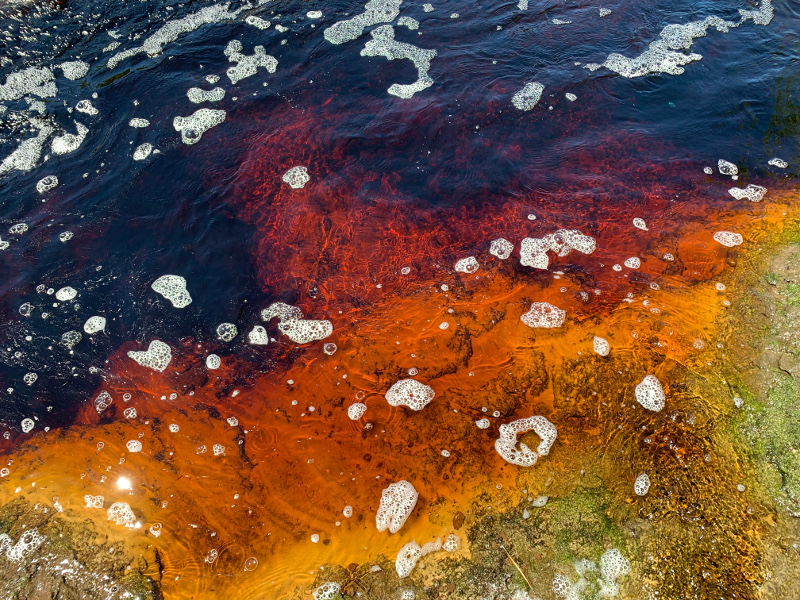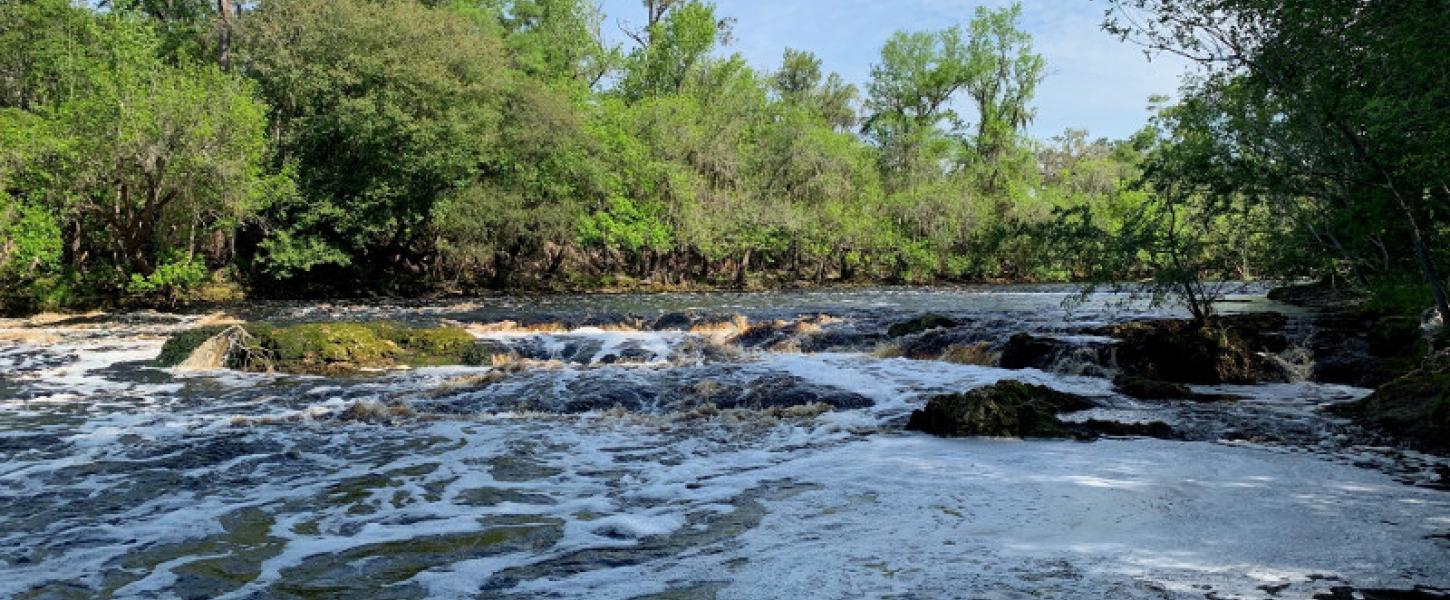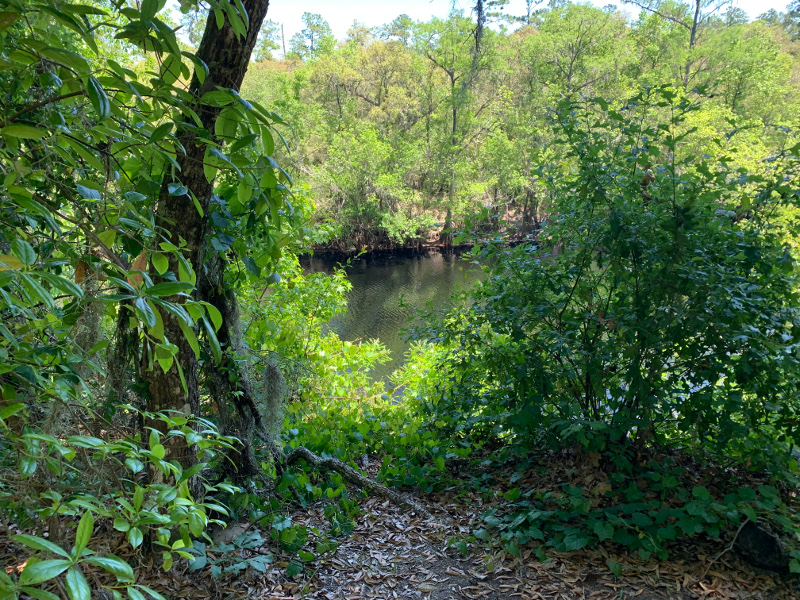
The Shoals and the Suwannee River

Big Shoals State Park is unique in more ways than one. Though many think of the shoals as the most fascinating aspect of the park, an equally unique feature is the Suwannee River itself, which tells a story from days long past. The generally tranquil flow of the blackwater river (actually a rusty tea-color) is caused by tannic acids released by decaying vegetation in the water. The only times this color changes is when the water churns over the Big and Little Shoals, frothing and foaming into whitewater rapids.

The park is situated in an area referred to as the Cody Escarpment or Cody Scarp, a geological feature found throughout the north and central parts of Florida. It roughly approximates an ancient shoreline when sea levels were much higher and represents the largest continuous landscape break in Florida. North of the scarp are the rolling hills of the northern highlands and to the south are the flat and low-lying Gulf Coast lowlands. The lowlands have only a thin layer of sandy soil over limestone. This type of karst typography is why the region is peppered with springs and sinkholes. Every river that crosses the Cody Scarp in our area goes underground and reemerges downstream as a spring, with the sole exception of the Suwannee River.

From the Okefenokee Swamp to just south of the Big Shoals, the river relies solely on rainfall to keep its levels up in the area north of the scarp. Below the Big Shoals the river begins its descent into the lowlands south of the scarp, where springs, rivers and other tributaries flow into the Suwannee. Thanks to the location of the scarp within the park, a truly unique process occurs here, creating the effect of water rushing over rocks and sand, or shoals.

The Big Shoals make up the largest whitewater rapids in the state. Another smaller set of rapids, the Little Shoals, occur downstream. The shoals themselves exist because of dolomitic and silicified sediments that are more resistant to water flow than other sediments, creating unique hard mud formations that look much like the large boulders and rocks found in the rivers of the northeastern United States. Both shoals provide a genuine whitewater experience seldom encountered in Florida.

The Suwannee River and the Big Shoals are just two of the pieces that make this park such a special place. Both are constantly changing, and who knows what they may look like in 10, 20 or 100 years. All we know is that this park is worth protecting and is a prime example of why the Florida Park Service preserves these places for the future.